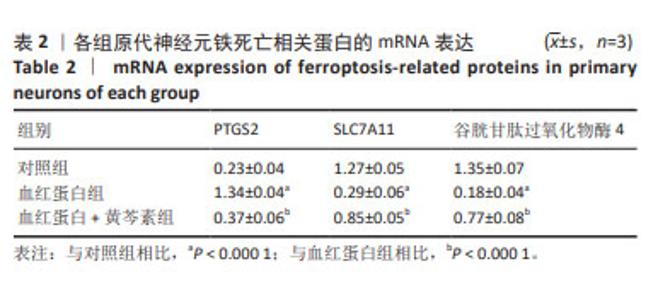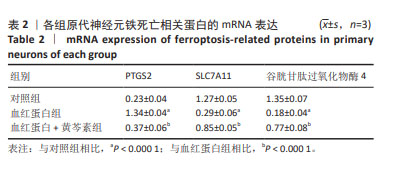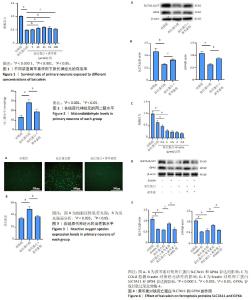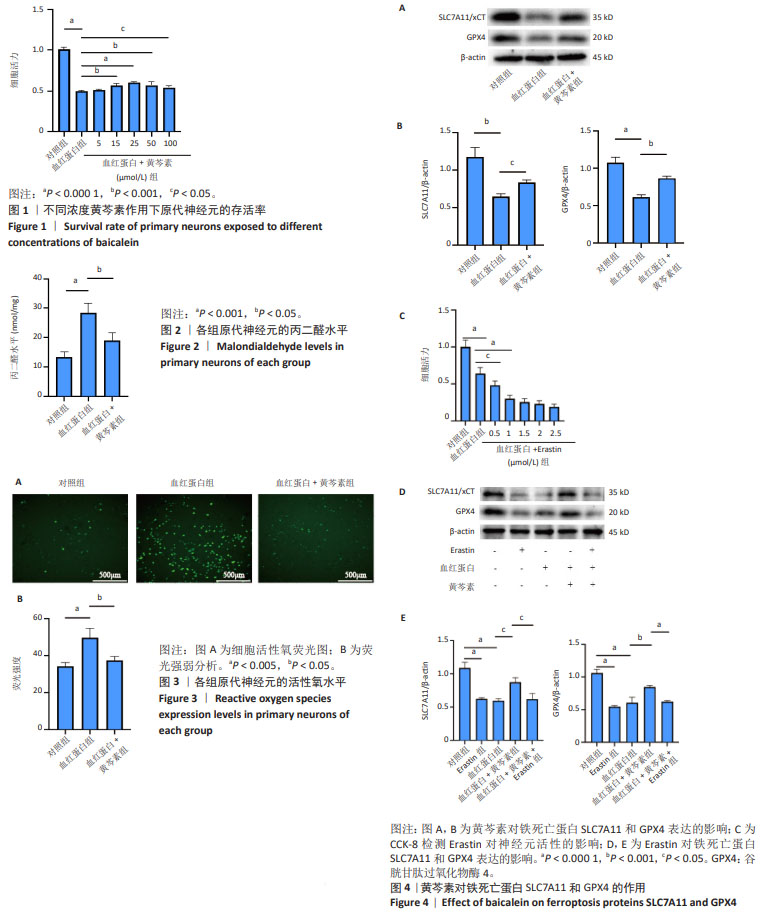[1] CLAASSEN J, PARK S. Spontaneous subarachnoid haemorrhage. Lancet. 2022;400(10355):846-862.
[2] ZENG H, CHEN H, LI M, et al. Autophagy protein NRBF2 attenuates endoplasmic reticulum stress-associated neuroinflammation and oxidative stress via promoting autophagosome maturation by interacting with Rab7 after SAH. J Neuroinflammation. 2021;18(1):210.
[3] RASS V, HELBOK R. Early Brain Injury After Poor-Grade Subarachnoid Hemorrhage. Curr Neurol Neurosci Rep. 2019;19(10):78.
[4] NEIFERT SN, CHAPMAN EK, MARTINI ML, et al. Aneurysmal Subarachnoid Hemorrhage: the Last Decade. Transl Stroke Res. 2021; 12(3):428-446.
[5] LI Y, LIU Y, WU P, et al. Inhibition of Ferroptosis Alleviates Early Brain Injury After Subarachnoid Hemorrhage In Vitro and In Vivo via Reduction of Lipid Peroxidation. Cell Mol Neurobiol. 2021;41(2):263-278.
[6] HUANG Y, WU H, HU Y, et al. Puerarin Attenuates Oxidative Stress and Ferroptosis via AMPK/PGC1α/Nrf2 Pathway after Subarachnoid Hemorrhage in Rats. Antioxidants (Basel). 2022;11(7):1259.
[7] LIANG Y, DENG Y, ZHAO J, et al. Ferritinophagy is Involved in Experimental Subarachnoid Hemorrhage-Induced Neuronal Ferroptosis. Neurochem Res. 2022; 47(3):692-700.
[8] JIANG X, STOCKWELL BR, CONRAD M. Ferroptosis: mechanisms, biology and role in disease. Nat Rev Mol Cell Biol. 2021;22(4):266-282.
[9] CHEN X, KANG R, KROEMER G, et al. Ferroptosis in infection, inflammation, and immunity. J Exp Med. 2021;218(6):e20210518.
[10] TANG D, KROEMER G. Ferroptosis. Curr Biol. 2020;30(21):R1292-R1297.
[11] LI QS, JIA YJ. Ferroptosis: a critical player and potential therapeutic target in traumatic brain injury and spinal cord injury. Neural Regen Res. 2023;18(3):506-512.
[12] KOPPULA P, ZHANG Y, ZHUANG L, et al. Amino acid transporter SLC7A11/xCT at the crossroads of regulating redox homeostasis and nutrient dependency of cancer. Cancer Commun (Lond). 2018;38(1):12.
[13] YANG WS, SRIRAMARATNAM R, WELSCH ME, et al. Regulation of ferroptotic cancer cell death by GPX4. Cell. 2014;156(1-2):317-331.
[14] DINDA B, DINDA S, DASSHARMA S, et al. Therapeutic potentials of baicalin and its aglycone, baicalein against inflammatory disorders. Eur J Med Chem. 2017;131:68-80.
[15] LIU BY, LI L, LIU GL, et al. Baicalein attenuates cardiac hypertrophy in mice via suppressing oxidative stress and activating autophagy in cardiomyocytes. Acta Pharmacol Sin. 2021;42(5):701-714.
[16] CHEN X, ZHOU Y, WANG S, et al. Mechanism of Baicalein in Brain Injury After Intracerebral Hemorrhage by Inhibiting the ROS/NLRP3 Inflammasome Pathway. Inflammation. 2022;45(2):590-602.
[17] MLADĚNKA P, MACÁKOVÁ K, FILIPSKÝ T, et al. In vitro analysis of iron chelating activity of flavonoids. J Inorg Biochem. 2011;105(5):693-701.
[18] ZHOU Y, TAO T, LIU G, et al. TRAF3 mediates neuronal apoptosis in early brain injury following subarachnoid hemorrhage via targeting TAK1-dependent MAPKs and NF-κB pathways. Cell Death Dis. 2021;12(1):10.
[19] LIU GJ, TAO T, WANG H, et al. Functions of resolvin D1-ALX/FPR2 receptor interaction in the hemoglobin-induced microglial inflammatory response and neuronal injury. J Neuroinflammation. 2020;17(1):239.
[20] SUZUKI H, MURAMATSU M, TANAKA K, et al. Cerebrospinal fluid ferritin in chronic hydrocephalus after aneurysmal subarachnoid hemorrhage. J Neurol. 2006;253(9):1170-1176.
[21] HUANG S, LI S, FENG H, et al. Iron Metabolism Disorders for Cognitive Dysfunction After Mild Traumatic Brain Injury. Front Neurosci. 2021; 15:587197.
[22] LIU Z, ZHOU Z, AI P, et al. Astragaloside IV attenuates ferroptosis after subarachnoid hemorrhage via Nrf2/HO-1 signaling pathway. Front Pharmacol. 2022;13:924826.
[23] KOPPULA P, ZHUANG L, GAN B. Cystine transporter SLC7A11/xCT in cancer: ferroptosis, nutrient dependency, and cancer therapy. Protein Cell. 2021; 12(8):599-620.
[24] FRIEDMANN ANGELI JP, SCHNEIDER M, PRONETH B, et al. Inactivation of the ferroptosis regulator Gpx4 triggers acute renal failure in mice. Nat Cell Biol. 2014;16(12):1180-1191.
[25] YE Y, CHEN A, LI L, et al. Repression of the antiporter SLC7A11/glutathione/glutathione peroxidase 4 axis drives ferroptosis of vascular smooth muscle cells to facilitate vascular calcification. Kidney Int. 2022;102(6):1259-1275.
[26] LIU C, HE P, GUO Y, et al. Taurine attenuates neuronal ferroptosis by regulating GABAB/AKT/GSK3β/β-catenin pathway after subarachnoid hemorrhage. Free Radic Biol Med. 2022;193(Pt 2):795-807.
[27] GAO SQ, LIU JQ, HAN YL, et al. Neuroprotective role of glutathione peroxidase 4 in experimental subarachnoid hemorrhage models. Life Sci. 2020;257:118050.
[28] PEREZ CA, WEI Y, GUO M. Iron-binding and anti-Fenton properties of baicalein and baicalin. J Inorg Biochem. 2009;103(3):326-332.
[29] XIE Y, SONG X, SUN X, et al. Identification of baicalein as a ferroptosis inhibitor by natural product library screening. Biochem Biophys Res Commun. 2016; 73(4):775-780.
[30] PROBST L, DÄCHERT J, SCHENK B, et al. Lipoxygenase inhibitors protect acute lymphoblastic leukemia cells from ferroptotic cell death. Biochem Pharmacol. 2017;140:41-52.
|



